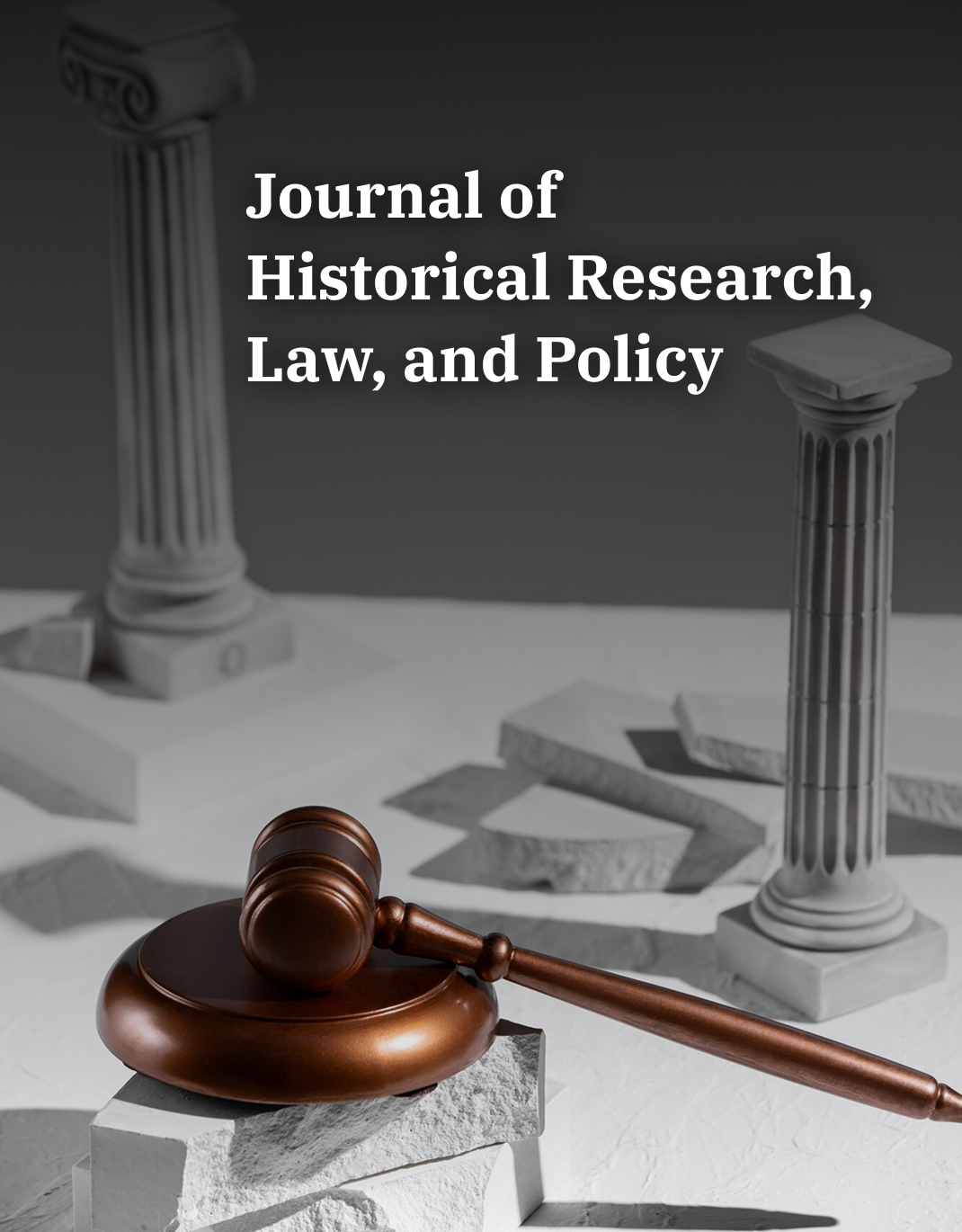Criminal Policy of Iran and the United Kingdom Regarding the Offense of Drug Use
Keywords:
criminal policy, drug use offense, Anti-Narcotics Law (Iran), Misuse of Drugs Act 1971, Psychoactive Substances Act 2016, proportionality of punishment, Iranian Criminal Law, United KingdomAbstract
This study conducts a comparative analysis of the criminal policy of Iran and the United Kingdom concerning the use of narcotic drugs, and explains the logic behind integrating punishment with health-oriented interventions. The research follows a descriptive–analytical approach and relies on primary legal sources, sentencing guidelines, and executive documents. For comparison, the study employs a three-dimensional matrix—legislative, judicial, and executive—against four policy criteria: proportionality, deterrent effectiveness, alignment with public health, and enforceability. The findings indicate that Iran criminalizes “use/addiction” but Articles 15 and 16 of the Anti-Narcotics Law provide treatment-oriented pathways for exemption or suspension of prosecution, thereby facilitating the legal exit of the user from the criminal cycle. In the United Kingdom, “use” per se is not criminalized, and criminal policy exerts its practical effect through the criminalization of “possession” under the Misuse of Drugs Act 1971 and the focus on production and supply under the Psychoactive Substances Act 2016. Sentencing is calibrated through binding guidelines of the Sentencing Council, and treatment-oriented community orders offer an alternative to short-term imprisonment. The executive analysis reveals that Iran, in order to enhance the effectiveness of its response to drug use, requires standardization of criminal decision-making, continuity of treatment from prison to community, and integration of health–justice data systems. Conversely, the United Kingdom—through its “From Harm to Hope” strategy, mandatory treatment requirements in community orders, and expanded access to naloxone—presents a more coherent model. Accordingly, the article recommends developing criteria-based sentencing guidelines, institutionalizing diversion from prosecution conditional on treatment, implementing the “Take-Home Naloxone” protocol, and establishing online dashboards for monitoring coverage and outcomes as key policy implications.
Downloads
References
1. Bakhshashi M. An Integrated Study of Narcotic and Psychotropic Substances from the Perspective of Criminal Law and Criminology. The First International Conference on Law, Management of Educational Sciences, Psychology, and Educational Planning Management. Tehran2023.
2. Hosseinpouri M. Iran's Criminal Policy Regarding Drug Crimes in the Amendment to Article 45, Considering the 1988 Convention. Comparative Criminal Jurisprudence Quarterly. 2023;3(1).
3. Fazli A. National and International Measures in Combating Drug Trafficking and Use. Legal Research of Ghanun Bar Journal. 2022;5(20):400-7.
4. Lazerges C. An Introduction to Criminal Policy. 10th Edition ed. Najafi Abrandabadi AH, editor. Tehran: Mizan Publications; 2021.
5. Mokhtarnia S, Aliverdi Migouni F, Esmaeili M. Analysis of Executive Criminal Policy Discourses in Controlling Drug Abuse. Scientific Quarterly of Addiction Studies. 2021;15(59):335-60. doi: 10.52547/etiadpajohi.15.59.335.
6. Arian Kia A. The Efficacy of Drug Use Punishment in Preventing and Rehabilitating Offenders in Iranian and British Law. Taft: Islamic Azad University, Taft Branch; 2021.
7. Palmateer N. Harm reduction interventions to prevent HCV… and human rights. International Journal of Drug Policy. 2022;105:103749.
8. Ganji M. Assessment of the Status and Process of Centers under Article (16) of the Anti-Narcotics Law. Monthly Expert Reports of the Parliament Research Center. 2024;32(10).
9. Ashworth A, Zedner L. Preventive Justice. Oxford: Oxford University Press; 2014.
10. Tyler TR, Goff PA, Macoun RJ. The impact of psychological science on policing in the United States: Procedural justice, legitimacy, and effective law enforcement. Psychological Science in the Public Interest. 2015;16(3):75-109. doi: 10.1177/1529100615617791.
11. United Nations Office on Drugs and Crime. Handbook on the Crime Prevention Guidelines: Making them Work. Vienna: UNODC; 2010.
12. Garland D. The Culture of Control: Crime and Social Order in Contemporary Society. Chicago: University of Chicago Press; 2001.
13. Ashworth A. Sentencing and Criminal Justice. 6th ed. Cambridge: Cambridge University Press; 2015.
14. Islamic Republic of Iran. The Anti-Narcotics Law, enacted in (1988) with amendments in (2017) (Including Article 15). 2017.
15. Islamic Republic of Iran. Executive By-Law of Authorized Treatment and Harm Reduction Centers. 2013.
16. Saberi Zafarghandi MB. A Collection on the Establishment, Management, and Supervision of Authorized State, Non-Governmental, Private, or NGO Centers for the Treatment and Harm Reduction of Addicts (Based on Article 15 of the 1997 Amended Anti-Narcotics Law). Tehran: General Department of Treatment and Social Support, Anti-Narcotics Headquarters; 2021.
17. Platt L. Needle and syringe programmers and opioid substitution therapy for preventing HCV transmission among PWID: A systematic review and meta-analysis. International Journal of Epidemiology. 2017;46(2):565-82.
18. Islamic Republic of Iran. The Islamic Penal Code (Article 19: Grading of Ta'zir Penalties; Article 37; Article 134). 2013.
19. Islamic Republic of Iran. The Code of Criminal Procedure (Article 374: Necessity of a Reasoned/Motivated/Substantiated Verdict). 2013.
20. Akbari A. Examination and Critique of the Criminal Policy Governing Drug Crimes in Iran with Emphasis on the 2010 Amendment to the Anti-Narcotics Law. Criminal Law Research Journal. 2014;9(2).
21. Ghalami H. The Criminal Policy of Fourteen Countries Regarding Amnesty and Mitigation of Punishment for Drug Crimes. Social Health and Addiction Quarterly. 2013;1(1).
22. Frootan M, Mousavi SI. The Criminal Policy of Iran, the Netherlands, and the United Kingdom Regarding Drug Crimes. Afagh-e Olum-e Ensani Monthly. 2017(8).
23. Disley E, Europe R. Evaluation of the Offender Liaison and Diversion Trial Schemes. 2016.
24. Europe R. Findings from the national evaluation of Liaison & Diversion (Research Brief RBA1271-1). 2021.
25. Merrall EL, Kariminia A, Binswanger IA, Hobbs MS, Farrell M, Marsden J, et al. Meta-analysis of drug-related deaths soon after release from prison. Addiction. 2010;105(9):1545-54. doi: 10.1111/j.1360-0443.2010.02990.x.
Downloads
Published
Submitted
Revised
Accepted
Issue
Section
License
Copyright (c) 2025 Afsaneh Mehregan Ara (Author); Ebrahim Yaghouti; Mohammad Ali Kanani (Author)

This work is licensed under a Creative Commons Attribution-NonCommercial 4.0 International License.
